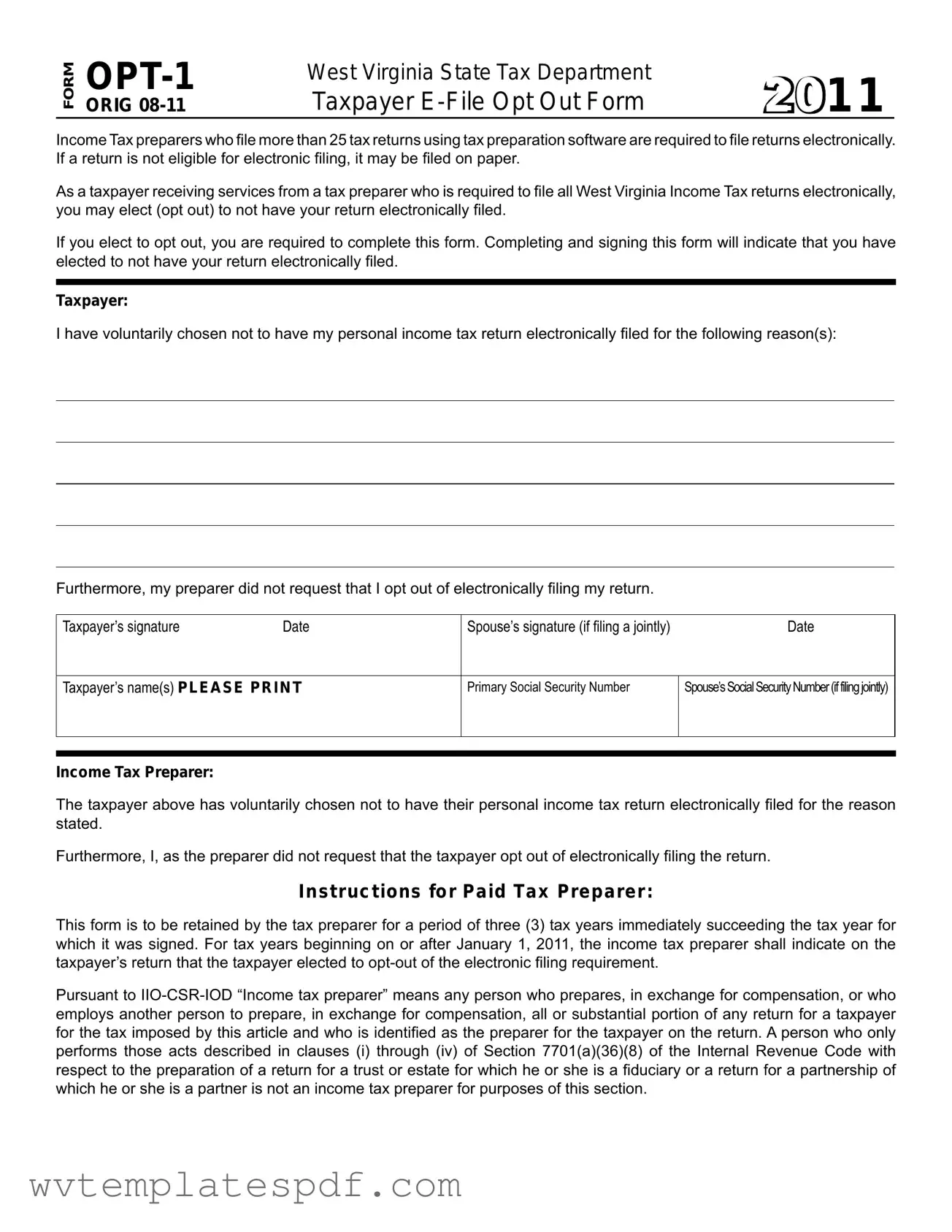Filling out the West Virginia Opt 1 form can be straightforward, but many people make common mistakes that can delay the process or lead to complications. One significant error is failing to provide complete information. Each section of the form requires specific details, such as names and Social Security numbers. Omitting any of this information can result in the form being rejected.
Another mistake is not signing the form. Both the taxpayer and the spouse, if applicable, must sign and date the document. A missing signature can invalidate the opt-out request, forcing the taxpayer to start over. It’s essential to double-check that all required signatures are present before submission.
Some individuals neglect to indicate their reason for opting out. The form includes a section where taxpayers must state their reasons clearly. Skipping this part can lead to confusion and may require additional clarification from the tax preparer.
Using incorrect or outdated information is also a frequent issue. Taxpayers must ensure they are using the most recent version of the Opt 1 form. If an outdated form is submitted, it may not be accepted, causing unnecessary delays.
Another common error is misunderstanding the role of the tax preparer. Taxpayers should remember that the form must be completed and signed by the taxpayer, not the preparer. The preparer’s role is to acknowledge the taxpayer's decision to opt out, not to make that decision on behalf of the taxpayer.
Additionally, some people fail to retain a copy of the completed form. It is crucial for taxpayers to keep a copy for their records, as they may need to reference it in the future. Not having a copy can lead to complications if questions arise later.
Finally, procrastination can be a significant pitfall. Filling out the form at the last minute can lead to rushed mistakes. It’s advisable to complete the form well in advance of any deadlines to ensure all information is accurate and complete.
